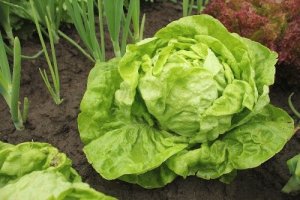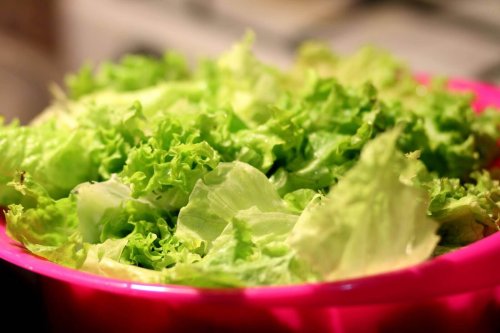Lettuce Varieties and How to Grow Them

There are many lettuce varieties you can grow in your garden and they come in different sizes, shapes, and flavors.
Are you wondering which one you can grow?
Today, we’ll tell you about the available options you can grow yourself.
Which lettuce varieties should you choose?
Lettuce has many health properties. However, in addition to being good for you, it’s also delicious and low in calories. In fact, lettuce contains about 95% water and only 15 calories per 100 grams.
Regarding nutrients, lettuce is a good source of vitamins A, C, and folate. It also provides minerals such as potassium, calcium, phosphorus, magnesium, and sodium.
Overall, we can highlight the following benefits:
- Lettuce helps you sleep.
- It has analgesic and calming properties.
- Lettuce stimulates your digestive glands.
- It also acts as a mild laxative due to its fiber content.
- Diabetics can eat it.
- Finally, it’s rich in beta-carotene and also contributes to the prevention of certain types of cancer.
That said, there are more than 200 varieties of lettuce. The best known are iceberg, romaine, mini romaine, and summer wonder. No matter what the variety, lettuce is an easy vegetable to grow. Indeed, depending on the variety, it can be planted at any time of the year and collected after about three or four months later.
However, you do have to worry about slugs, snails, fungi, aphids, and birds.
Here are three popular varieties you can plant in your garden.
Lettuce Varieties

Iceberg
First, we’d like to propose the iceberg lettuce variety because you can plant it at any time of the year. Also, you’ll be able to enjoy it in your salads in about three months.
This kind of lettuce is round and rather similar to cabbage. Its leaves are crispy in texture, so it’s widely used in salads.
We recommend you read: Six Quick and Easy Salads
Romaine
This is one of the most widespread lettuce varieties, probably because it’s easy to grow and keeps well. Its leaves are elongated and have a characteristic thick central nerve. It’s also one of the most common around the world.
You can plant it at any time of the year and requires little care and effort. However, you’ll have to protect it from the frost during winter.
Mini Romaine
Since this variety is very similar to romaine but much smaller, it’s commonly called “mini romaine.” This mini version has a much sweeter taste than regular romaine. Also, its leaves have a thick central nerve, its leaves are curly and it’s quite compact.
If it’s not too hot during summer, you can plant it all year round. Still, it’s better to do so from January to April to be able to harvest it in the summer. You could also plant it from August to November and harvest it throughout the winter.
We recommend you read: Healthy Salads and What Not to Put in Them
Summer Wonder

The reddish color is its main feature and the leaves are usually curly. It’s for this reason that they know it as “curly lettuce” in some places. This is one of the most appreciated types of lettuce in gastronomy.
As for how to grow it, take into account that it doesn’t tolerate cold very well. After all, its name is “summer wonder!”
If you plant it every twenty days, you’ll be able to harvest it throughout the year, when the buds are closed and compact.
Tips for Growing Most Lettuce Varieties
- You can grow it with seedlings, but also with indirect sowing.
- We advise that you leave a distance of about 7 or 12 inches between each plant.
- Also, you can make a step garden plot if you’d like to harvest it throughout the year,
- As for irrigation, this is a moderately demanding vegetable, especially after the bud begins to form.
- Finally, you’ll need soil with enough nutrients, as this is a vegetable that requires many nutrients.
As you can see, it’s very easy to plant, grow and harvest lettuce. The best part is that, if you do it periodically throughout the year you’ll be able to enjoy fresh and tasty salads throughout the year. Thus, you will be taking advantage of all the health benefits this plant has to offer!
All cited sources were thoroughly reviewed by our team to ensure their quality, reliability, currency, and validity. The bibliography of this article was considered reliable and of academic or scientific accuracy.
- Hae Dun Kim et al. “Sleep-inducing effect of lettuce (Lactuca sativa) varieties on pentobarbital-induced sleep”, Food Sci Biotechnol. 2017; 26(3): 807–814.
- Jeon YJ et al. “Effects of beta-carotene supplements on cancer prevention: meta-analysis of randomized controlled trials”, Nutr Cancer. 2011 Nov;63(8):1196-207. doi: 10.1080/01635581.2011.607541. Epub 2011 Oct 7.
-
Diana M. Cheng et al. “Development and Phytochemical Characterization of High Polyphenol Red Lettuce with Anti-Diabetic Properties”, PLoS One. 2014; 9(3): e91571.
This text is provided for informational purposes only and does not replace consultation with a professional. If in doubt, consult your specialist.








